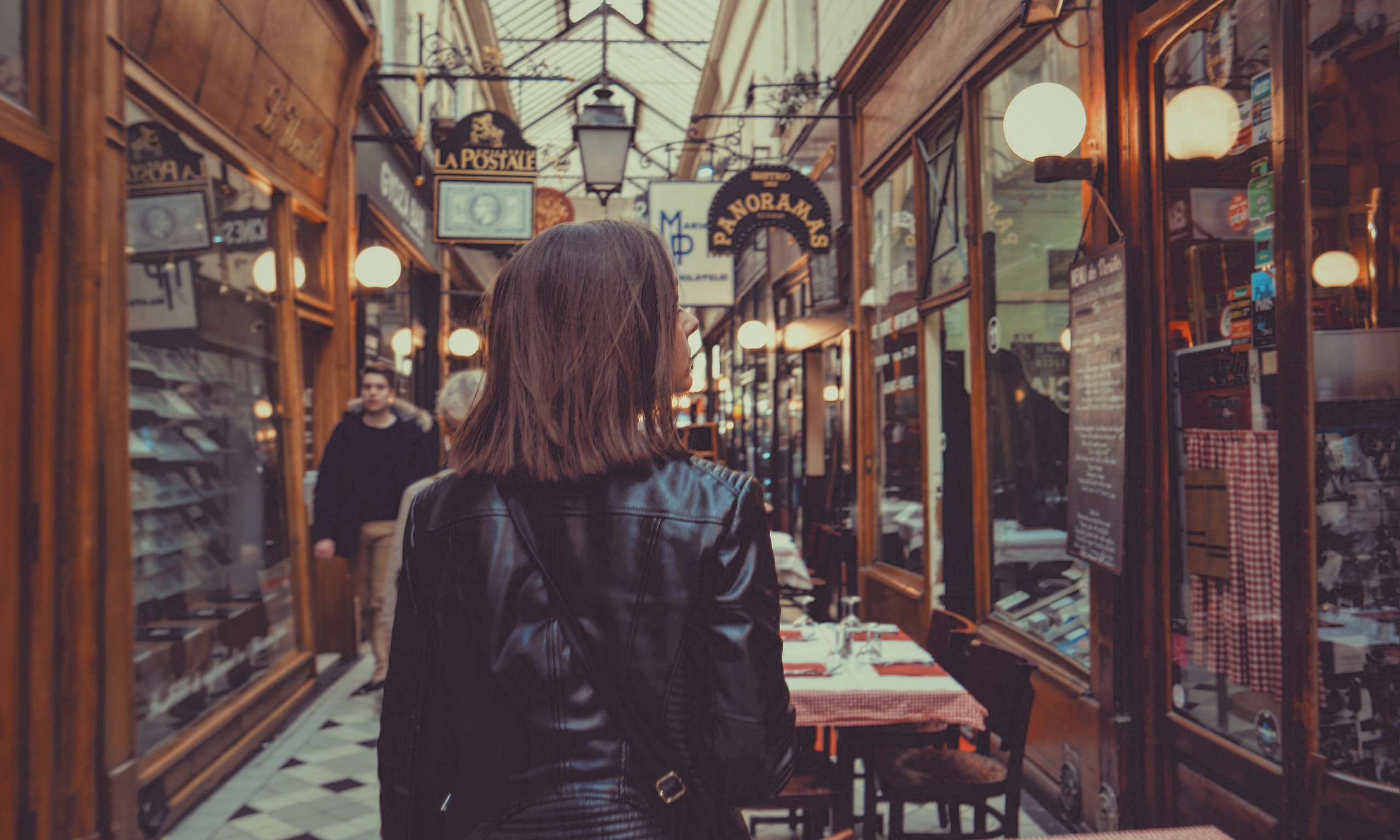
I love shopping. It’s probably one of my biggest flaws–or it’s the most American thing about me. It’s hard to know, exactly. Everyone has their own shopping habits and tics.
For example, I was shocked to hear that some people feel it isn’t worth their time to expend the effort required to mail back something bought online. I actually get a weird pleasure in returning things! I feel as if I’ve accomplished something virtuous in going to a store, not being tempted by their wares, and in fact getting money back from them.
When I was a freelancer–I work in an office now–I loved to shop because of the interactions, and the sense of accomplishment. The latter came from the rush of a good sale (or of avoiding my editor’s emails); interacting with people was more complicated. I empathize with Indian-American novelist Karan Mahajan, who wrote in The New Yorker a few years ago about trying to adapt to American small talk: “On a day that I don’t spend money in America, I feel oddly depressed.” He was writing about the culture shock that he experienced adjusting from India to the United States:
American life is based on a reassurance that we like one another but won’t violate one another’s privacies. This makes it a land of small talk. Two people greet each other happily, with friendliness, but might know each other for years before venturing basic questions about each other’s backgrounds. The opposite is true of Indians. At least three people I’ve sat next to on planes to and from India have asked me, within minutes, how much I earn as a writer (only to turn away in disappointment when I tell them). In the East, I’ve heard it said, there’s intimacy without friendship; in the West, there’s friendship without intimacy.
I’m Indian-American, and I know exactly what he means. For me, someone with a family that loves big talk, shopping has involved becoming more comfortable talking casually to a wider range of people. This means that it can be difficult to do something small, like, say, telling a bartender that the cider they’d given me tasted like a rotten banana. I had to swallow most of the drink to summon up the courage required. (And even then, it was only when a friend said that I was allowed to. The bartender was horrified: “Why didn’t you just tell me?”)
Shopping, both online and real life, is an experience with layers of personality, culture, and experience, and it means different things to different people. Sometimes, shopping for me is just looking: touching pretty things, smelling clean and fragrant clothes, or enjoying the silence of bookshelves. For some it’s a dangerous compulsion, and for others it’s the lure of the perfect item. People might use it to reassure themselves of their economic status, or perhaps they’re simply followers of fashion.
There are plenty of reasons to dislike shopping, too. The novelist Ann Patchett had a “no-shopping year” after feeling that it was getting in the way of living a more mindful life. And in the memoir The Year of Less, Cait Flanders writes about how she replaced alcoholism with compulsive purchases of clothes, books, and gadgets–but both types of consumption, she realized, were unconscious coping mechanisms that arose in response to difficult moments in her life.
It’s in these kinds of cases that shopping becomes about more than just lifestyle. How and why we shop can reflect ethics and principles as well. For instance, it’s almost a form of American patriotism to shop–Americans are pro-spending in a way that puts them at odds with many other countries, and the pastime is a key driver of the national economy. But plenty of us may feel more inclined toward anti-consumerist or minimalist shopping habits, perhaps inspired by the latest Netflix series to embrace a less cluttered life. Stores are places where habits and values come together, and advertisers know that this combination can be potent.
This is why, when I see how the internet has influenced shopping habits, I wonder what the future holds for how we talk to and interact with one another. Take Instagram, which is now the biggest department store in the world; it’s “the best and worst place to buy stuff online.” The platform makes it easier than ever to find an aesthetically gorgeous product, but that doesn’t guarantee it will deliver in the real world.
We live in a golden age for affordable knockoffs of high-end designer furniture–just don’t expect to be comfortable. I have friends who have bought stuff off Instagram that they instantly regretted, or who have lamented being unable to afford to live their perfect aesthetic. I followed some shoe companies for a while, because their products were so beautiful, but my feelings soured when it dawned on me that the shoes were more expensive than I could ever afford, and that they weren’t even “my kind” of shoes. For me, it feels like a test of personal strength and self-control to stroll through Anthropologie while resisting the company’s slightly ridiculous but simultaneously covetous wares–yet looking at clothes online simply feels like a pathetic fetish for a richer lifestyle. Instagram has heightened our awareness of what our friends and neighbors have that we don’t, whether it’s a piece of clothing, a fancy new gadget, or an entire, beautiful apartment–and, thanks to ad-tracking and consumer-profiling, those objects will follow me, you, and us, everywhere.
Brick-and-mortar shops increasingly pitch themselves to people as “experiences,” too, both to lure in consumers in the physical world and to look as good as possible when posted on the digital one. It makes consumer engagement with these spaces appear just as deliberate as paid sponsorship, but without payment.
This is just the intersection of aesthetic desire and shopping–if your thing is convenience, then it’s a golden age for that as well, with Amazon the ultimate enabler of new habits. The zenith of this is, arguably, how the online retailer now provides essential services to sick, elderly, disabled, or rural people in parts of the U.S. where other options, private- or government-run, are few and far between. Boycott Amazon for how it treats its workers! Vote with your wallet! The problem is that, for many of us, we can’t. The idea of changing the world through shopping for different, “better” products has always been a lie–“conscious consumerism” is nothing without systemic change. You can’t shop your way to a better planet, especially when most Americans can’t even afford to “go green.”
The thing is, shopping will never be a perfect reflection of our virtues. It can’t be–capitalism and marketing will take advantage of our desires and our lack of power, regardless of our individual strength and self-control. But, whenever I get too focused on these concerns, I also think about how Instagram has actually helped indie bookstores flourish. I think about how, if you search for the term “vintage stores” on Instagram, you find hundreds of lists of vintage shops that push for reusing clothing and are often independently owned. Even when Instagram messes with its algorithms, the vintage stores I follow inform us of this problem, like a kind of neighborhood watch for algorithmic curation.
I also think about how people at the places I shop know me. I live near a used bookstore, as well as a a shop for used clothes and vintage goods, and I buy and sell at all of them. It’s a great way to support local businesses and do something good for the environment by avoiding the packaging that comes with shopping online–but I also do it because it curbs my own impulses a bit more. Best of all, small talk scares me no more, and sometimes, because I get to know the people around me well enough, we even slip into much bigger talk. It makes me feel the way my parents must feel as they buy Indian clothes and food from the diaspora community near them; my mom gets her saris tailored by a woman who works out of her home.
My buying and selling habits mean that the people who work at local businesses know exactly who I am. A bookseller invited me to join a book club; the women at the vintage recognize the Dior velvet skirt that I first bought at their $5 sale, and ask me about the alterations I made. The clerks at the used clothing store recognize me by name, and they know that I use the money I get from selling to them to either buy more clothes or stock up on reading material at the bookstore next door. When I can’t sell used books at my local bookstore, I donate them to the library nearby; I donate clothing I can neither use nor sell to a local nonprofit, and I’m working on setting up a clothing swap. I do all of this in person, and all the people at these places truly know me.
I know that I’m very lucky to have such a wonderful network, and such warm camaraderie with the people whose stores I frequent. But I still buy things from Amazon, or drive to big-box stores like Target, and I still lust over couches and clothes on Instagram. Just as none of us has exactly the same combination of shopping habits and values, what we’ve lost as shopping becomes more and more a digital act is also more personal and specific–I only hope that no single experience will dominate.

How We Get To Next was a magazine that explored the future of science, technology, and culture from 2014 to 2019. This article is part of our The Internet section, where we report on the past, present, and future of the information superhighway. Click the logo to read more.

